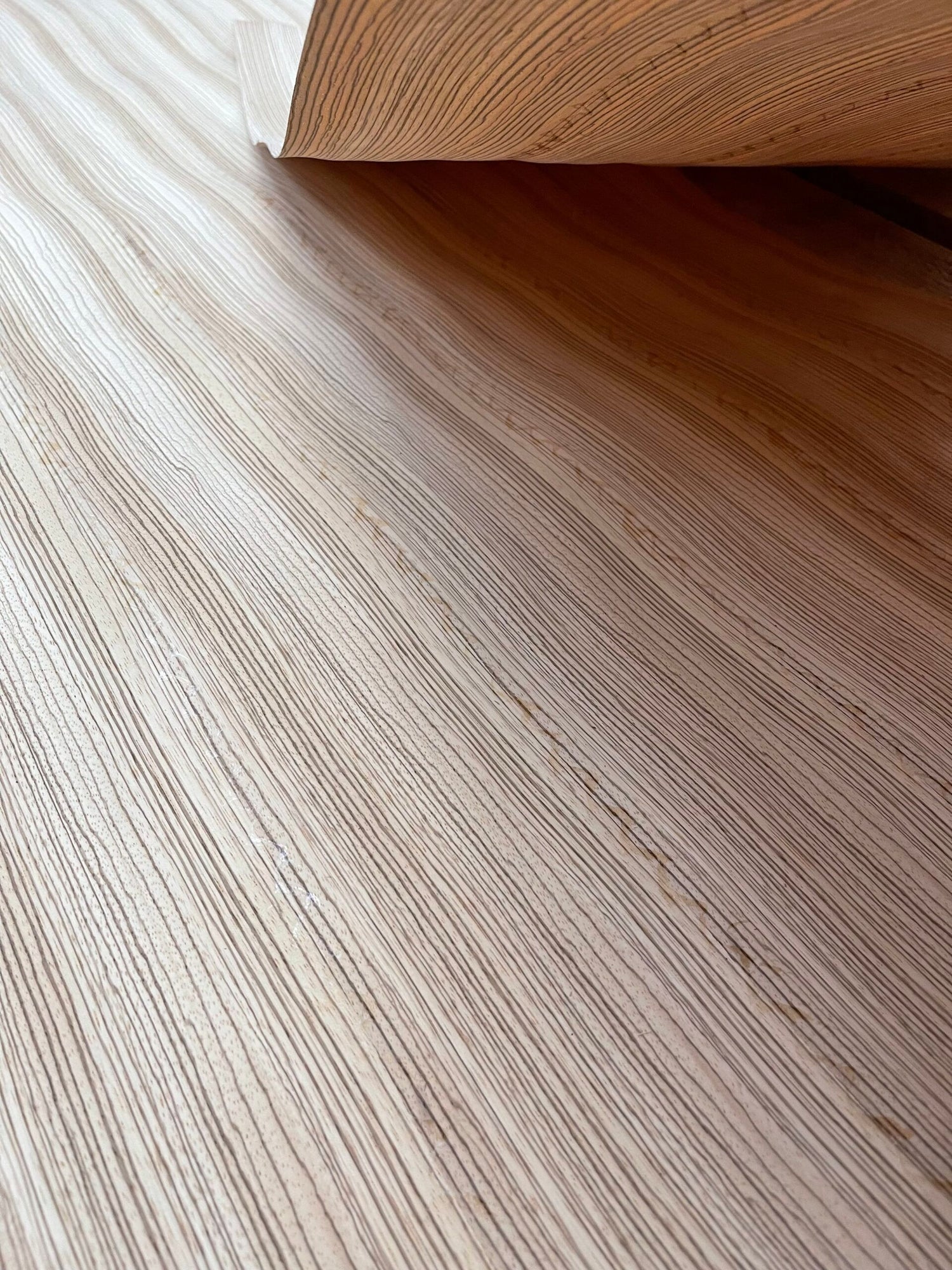Jointing & Layons
Once you have selected your veneer, the next step is jointing into layons.
Although we do not have the facilities in-house to stitch layons, with the right quantity we can arrange to have these made for you as a bespoke service. Call us to discuss your requirements and for more information on minimum order quantities, lead times and wastage. We are always happy to help.
Veneer jointing or stitching is the process of joining veneer leaves together to form a fixed-length sheet of veneer known as a layon, sometimes also known as skins or faces.
As the name describes, the layons can then be laid onto a substrate to create a veneered board which can be used for doors, furniture, panelling etc.
An important part of the process is veneer matching i.e. how the slices of veneer are laid next to each other and joined. This is a critical aspect of the design process as it will determine the look of the finished panel. The three main techniques used are illustrated.
Book Match
As the name suggests when book matching veneer the leaves are turned like the centre pages of a book and stitched to create a mirror image as the image shows below. This gives a balanced appearance across the joint but can cause visual differences in colour due to the light refraction created from flipping the veneer leaves.

Slip Match
The leaves within the bundle are laid face up in a run. The grain is therefore repeated but the joints do not show a match in grain.

Random Match
Veneer leaves of the same species are deliberately mixed to produce a random grain effect. The leaves used could be varying widths, colours and grains from different logs to produce even more variance and a planked look.

For us, it is critical to know the client’s expectations so that the right veneer can be selected. For example, we always try to pick running bundles when we are advised that the veneer needs to match, for example, on a run of kitchen cupboards or wall panelling. There will always be variance in the colour and grain within a tree, choosing running bundles (sequential slices from the log) will often give the most uniform look.
For examples and more information on matching burr veneers please read our 'Matching Burr Leaves' guide.

